based on E.H. Nickel & M.C. Nichols (2009), H. Strunz & E.H. Nickel (2001),
revised by Thomas Witzke (2023)
1. ELEMENTS
(Metals and intermetallic alloys, Metalloids and Nonmetals, Hydrides, Borides, Carbides, Silicides, Nitrides, Phosphides, and Oxy-Titanides)
1.A: Metals and intermetallic alloys
Silver polytypes: Silver-3C (cub., Fm3m), very common. Silver-2H (hex., P63/mmc), very rare, is isostructural with Zn, Os, Allargentum (Ag,Sb), Hexaferrum (Fe,Ru,Os,Ir), and Rutheniridosmine (Ir,Os,Ru). Silver-4H (hex., P63/mmc), very rare.
Brass was described without IMA approval, and is identical with α-brass in the system Cu-Zn. Zn can reach up to 38.95 wt.-%, Cu and Zn are disordered. Formally, α-brass is a zincian variety of copper.
The cubic Im3m structure of Steinhardtite is stabilized by Fe and Ni, so a more realistic formula would be (Al,Fe,Ni) and it is not a true polymorph of Aluminium in a strict sense.
Zhanghengite corresponds to β-brass in the Cu-Zn system. In the pure system, β-brass is stable above 468ºC. It is isotypic with α-iron. Cu and Zn are disordered.
"Kamacite" = Nickel-bearing iron, discredited in 2006.
Suessite, Fe3Si, space group Im3m, with disordered distribution of Fe and Si, is isostructural (see in 1.BD.).
Rhenium, Re, hex., P63/mmc, discredited, but probably occurs in nature.
Mercury is solid below -38.85ºC.
Native cerium, incompletely described from Mare Crisium, The Moon, needs further study.
Native manganese was described without IMA approval, but with relatively good data, from Pt-Au placers, central Aldan shield, Siberia, Russia.
Native tantalum, incompletely described from a few localities, not submitted to IMA, but probably a valid mineral. Needs further study.
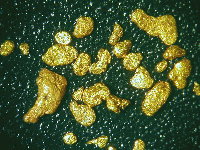 | 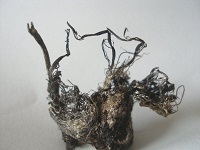 | 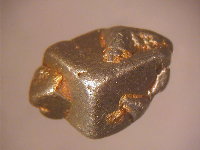 | 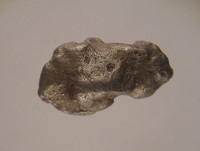 |
Icosahedrite is the first known natural quasicrystal. The symmetry can't be described with one of the seven common crystal systems. The diffraction pattern is in accordance with an incommensurate lattice with five-, three- and two-fold symmetry.
Decagonite is the second known natural quasicrystal. The symmetry can't be described with one of the seven common crystal systems.
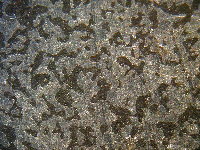 | 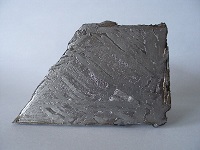 | 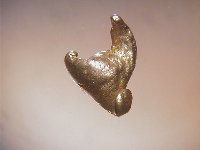 | 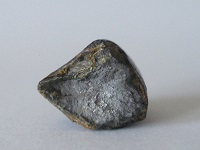 |
CsCl structure type. From a chemical point, Stolperite doesnt belong to "1.AC. Intermetallic alloys with Fe, Co, Ni, Platinum group elements (PGE)", but was placed here to have all isostructural minerals in one group.
Tetragonal distorted CsCl structure type. From a chemical point, Tetra-auricupride doesnt belong to "1.AC. Intermetallic alloys with Fe, Co, Ni, Platinum group elements (PGE)", but was placed here to have all isostructural minerals one group.
The Auricupride group was established by Mitchell et al., 2017, Min. Mag. 81, 411-461, as a member of the Perovskite supergroup. Auricupride itself (and the questionable Cuproauride) doesnt belong from a chemical point to the "1.AC. Intermetallic alloys with Fe, Co, Ni, Platinum group elements (PGE)", but as all other members fit here and to keep the group as once, it was placed here.
Isostructural is the silicide Carletonmooreite, Ni3Si, Pm3m (see in 1.BD.)
The minerals belong to the Nickeline structure type. From a chemical point, Sorosite and Yuanjiangite doesnt belong to "1.AC. Intermetallic alloys with Fe, Co, Ni, Platinum group elements (PGE)", but were placed here to have all Nickeline type structures in one group.
Taimyrite: originally described as Taimyrite-I, renamed.
Stannopalladinite: originally assumed to be Pd3Sn2, hex., P63/mmc, and the Sn analogue of Plumbopalladinite. Re-examination showed that the mineral is (Pd,Cu)3Sn, orth., space group unknown. The crystal structure could not be determined and the role of Cu is unknown (Kasatkin et al., 2023, Min. Mag. 87, 773-782).
ZrAl3 structure type.
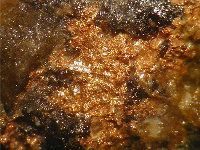 | 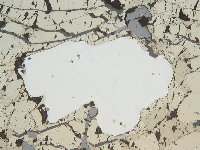 | 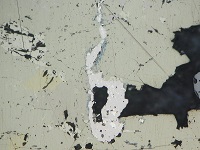 | 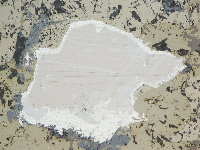 |
The composition of Danbaite falls within the field of γ-brass (cub., I43m, a = 8.878 Å), but for the mineral different cell parameters are given. Indexing of the cubic cell is very unusual and not very likely. Possibly, the mineral is identical to γ-brass and the additional lines in the powder difraction pattern are from impurities.
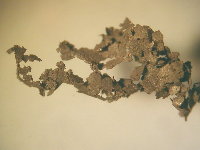 | 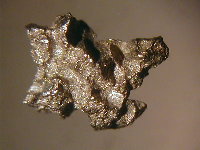 | 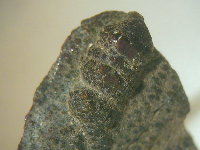 | 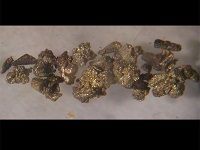 |
Paraschachnerite might be identical to Schachnerite (1.AA.025.), the powder diffraction pattern can be indexed with a hexagonal cell (Cipriani et al., 1993, Eur. J. Mineral. 5, 903-914). Needs further study.
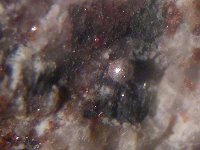 | 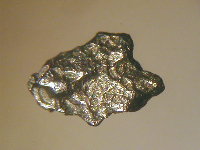 | 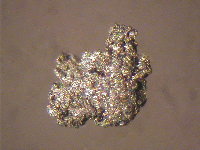 | 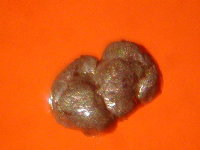 |
G = Grandfathered minerals: original description preceded the establishment of the CNMNC in 1959, and generally regarded as a valid species
A or IMA No. = Minerals approved by the CNMNC
Rd = Redefinition of the mineral approved by the CNMNC
Rn = Renamed with approval by the CNMNC
Q = Questionable mineral
Classification principles:
Re-arranged compared to Strunz 9. The discovery of several new minerals with unusual chemistry made the classification based in first instance on the chemistry in Strunz 9 more difficult and equivocal. A classification based on the crystal structure. A classification based primarily on crystal structure proved impractical because of the large number of different structures. Therefore, a classification based on structural and chemical principles was used. The sub-class 1.A. Metals and intermetallic alloys is now divided into 1.AA. Metals (including structures stabilized by other atoms), with large groups of simple cubic and hexagonal structures, 1.AB. Intermetallic alloys with Al, 1.AC. Intermetallic alloys with Fe, Co, Ni and Platinum Group Elements, including groups with CsCl, Perovskite and Nickeline structure types, 1.AD. Intermetallic alloys with Cu, Ag, Au, 1.AE. Intermetallic alloys with Hg (Amalgam). A few compromises were necessary to keep minerals with different chemistry in one structural group.
Further classification:
|
1.AA. Metals: Single element minerals and structures (polytypes) stabilized by other atoms.
Simple cubic structures Fm3m (cubic close-packed) and
Im3m; tetragonal structures; simple hexagonal structures
P63/mmc (hexagonal close-packed); liquid metal; questionable metals. 1.AB. Intermetallic alloys with Al: "Classical" alloys with Al; Quasicrystals with Al. 1.AC. Intermetallic alloys with Fe, Co, Ni and Platinum Group Elements: CsCl structure type; Perovskite structure type (site vacant Perovskite); Nickeline structure type; other structures. A few minerals which would fit from a chemical point to other orders are placed here to keep structural groups intact. 1.AD. Intermetallic alloys with Cu, Ag, Au: 1.AE. Intermetallic alloys with Hg (Amalgam): Cu amalgams, Ag amalgams, Au amalgams, Pb amalgams. |
To distinguish from classical Strunz numbering, on hierarchical "group" level, a numbering with 3 digits is used, like "1.AA.005. Copper group", instead of 2 digits (like "1.AA.05.") in the Strunz system.
© Thomas Witzke (2023)
